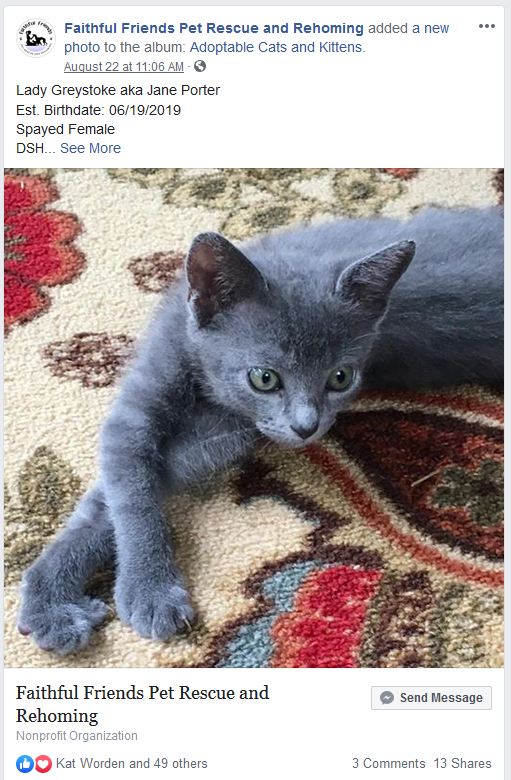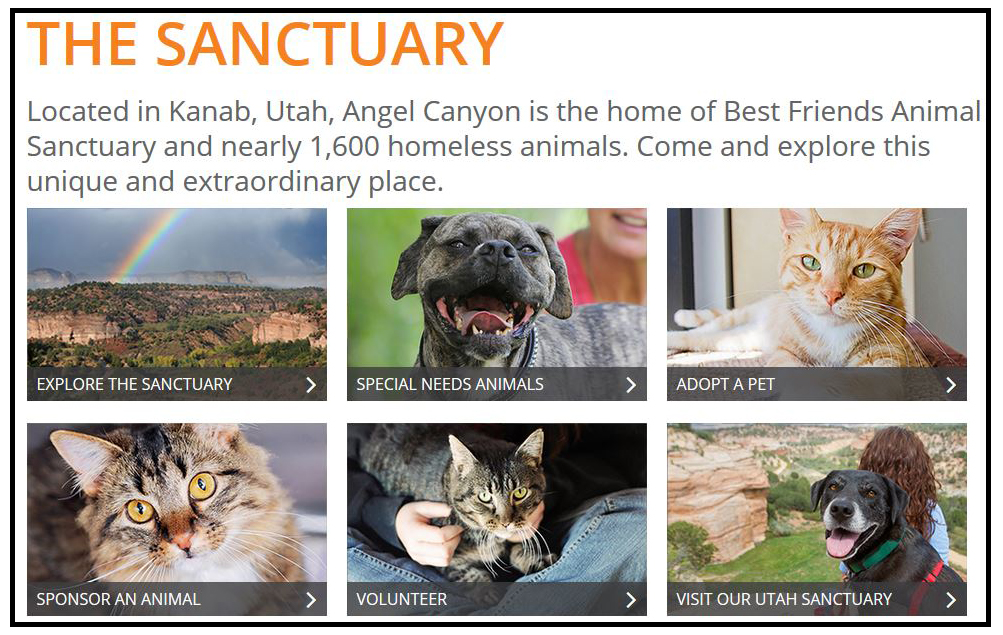Module 7: Get to Know a Shelter
Rescue Groups and Sanctuaries
Rescue groups are often small organizations that may be formally incorporated as 501c3 nonprofit organizations governed by a board of directors or may simply be a loose collection of like-minded individuals. Rescue groups frequently acquire their pets from animal shelters or directly from the public and foster them in private homes pending adoption. Most rescue groups do not have their own facilities so they use private veterinary clinics for medical care and conduct adoption events in public places such as pet stores or from their homes. Some rescue groups specialize in specific types of animals, such as a single species or breed, age group, or medical and behavioral conditions. In many shelters, transfer of animals to rescue groups is a major contributor to live outcomes.

Sanctuaries are defined as a place where animals are admitted to live out their lives. In most cases, finding alternative homes is not a function of sanctuary operations.
Perhaps the best-known sanctuary is the Best Friends Animal Society property located outside of Kanab, Utah. Founded as a traditional sanctuary for life-long care for many different species, operations have now expanded to include adoptions, conferences, hands-on sheltering programs in major cities, and national advocacy. BFAS also hosts a popular externship for veterinary students in its expansive sanctuary clinic.
Since providing lifelong care requires the commitment of adequate space, personnel, and funding, sanctuaries must limit the number of animals they take in to avoid exceeding their capacity for humane care. Several failed sanctuary operations have deteriorated into mass hoarding cases requiring emergency interventions.


